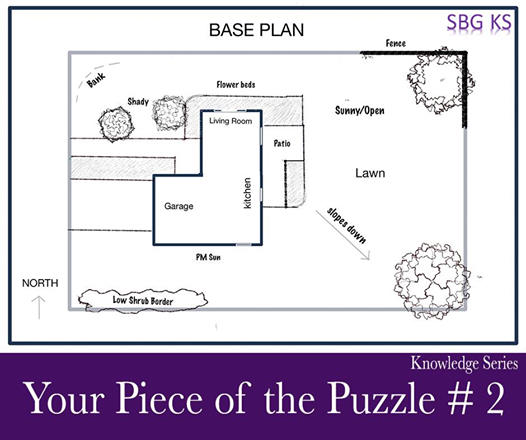Many visitors to the SBG tell us that they gain ideas and inspiration from our demonstration gardens, but feel overwhelmed when they think about applying their new knowledge to their own property. As tempting as it is to start by chatting about plants, we’ll start by planning for plants.
There is no ‘one -size –fits- all' for planning your landscape. Much will depend on the property you are working with, the site conditions, and your family’s needs.
Begin by making a base plan. A base plan is basically a bird’s- eye- view map of your present landscape that includes property lines, buildings and existing landscape features. This need not be complicated. A simple image can go a long way to helping you visualize your needs, and help outline your goals and priorities. Testing ideas on paper is much easier than rearranging plants in a yard.
Keep a notebook on hand for your family ‘wish list'. Do you want to create a secret garden for the kids, a cozy shaded reading corner, or an area for a fire pit? Have you always wanted a rock garden, butterfly garden or small pond? Your wish list can include something as simple as wanting to observe more birds from your kitchen window, or having a peaceful area for a quiet stroll. Your yard can be a great site for performing ecosystem services AND provide an area unique to you.
There’s no time like the dead of winter for making a wish list!
Author: Pam Ford


 RSS Feed
RSS Feed